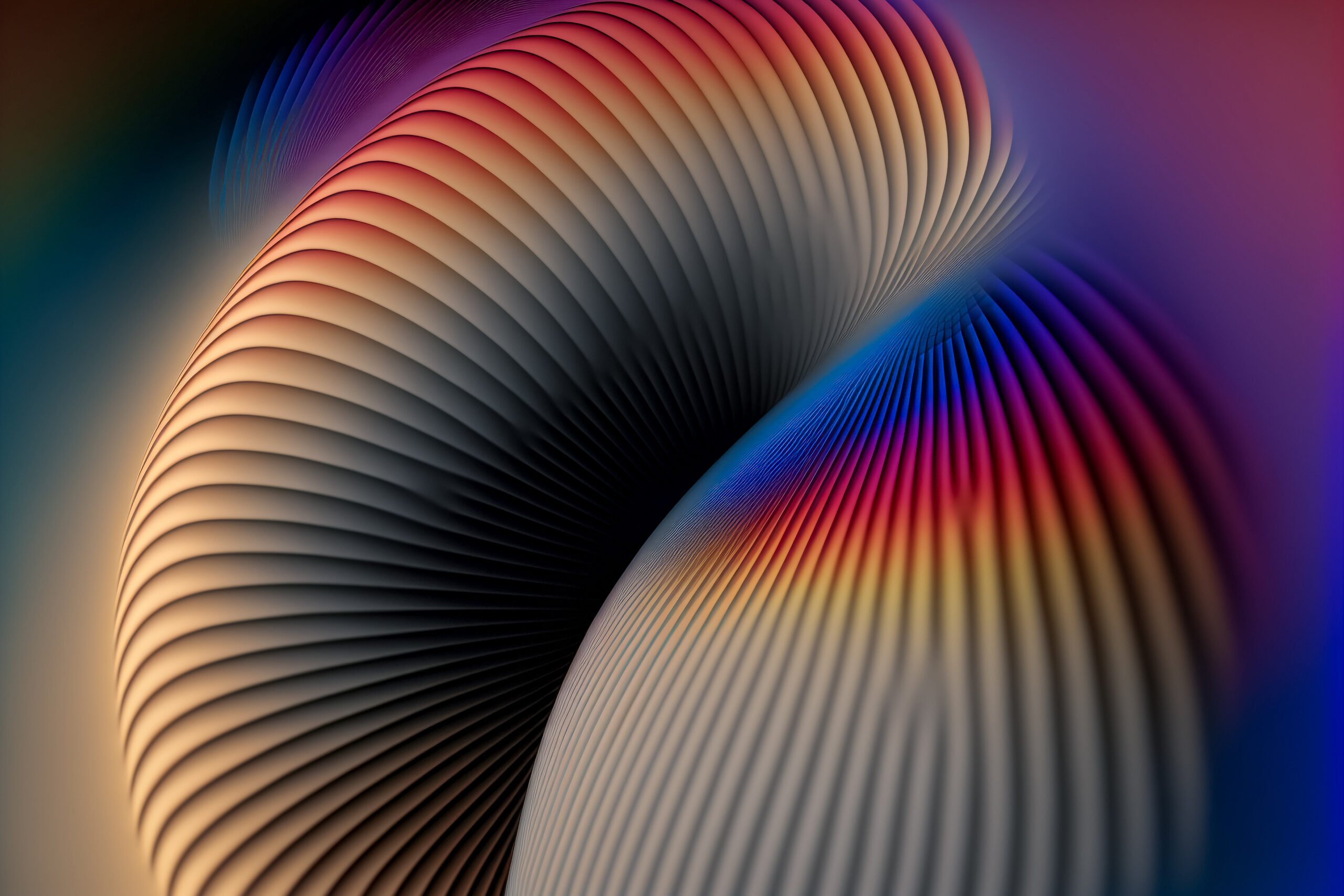Understanding Optical Fiber Auxiliary Coating Processes
Are you aware that over 90% of global internet traffic depends on fiber optic technology? This fact underscores the significance of each part in optical fiber cable production, particularly the fiber secondary coating line. These setups are vital for securing the cables’ strength and performance.
This piece will explore the complexities of fiber secondary coating lines. We will analyze their crucial function in shielding optical fibers. Furthermore, we will examine how these processes enhance optical fiber resilience and efficiency. This information is essential for those involved in fiber draw tower technology and production.
Overview of Fiber Optic Technology
Optical fiber technology has revolutionized communication, utilizing optical signals over electric currents. This technique provides fast data transfer with reduced signal loss. At the center of this technology exist the foundations of optical fiber communications. These basics are underpinned by a intricate setup. It consists of a center, encasing, coating, reinforcing strands, and a shielding cover. Each component is vital for the technique’s effectiveness.
The technology’s adoption into telecommunications has reshaped our data exchange system. It skillfully controls large data volumes, facilitating online, telephony services, and broadcasting channels. Thus, optical fibers not only enhances performance but also ensures consistency globally.
What is Fiber Secondary Coating Line
A fiber auxiliary coating system is a assembly of dedicated machines and processes. It coats protective layers to fiber optics after fabrication. This auxiliary layering is crucial for the fibers’ strength and operation. It protects them from environmental and mechanical risks. The importance of coatings in upholding fiber resilience is clear.
Explanation and Significance in Optical Fiber Manufacturing
The auxiliary layering operation is critical in fiber creation. It involves covering the fiber cores with a plastic coat. This cover safeguards the optics during deployment and use. It extends the durability of fibers by mitigating harm from curving, abrasion, and foreign materials.
Without these coatings, optics would be vulnerable to splitting and functional problems. This process is essential for maintaining the fibers’ integrity.
The Purpose of Coverings in Defending Fiber Strands
Coverings play a crucial role in preserving the optical clarity and physical strength of optics. They act as a barrier against physical stress and external elements. The significance of coverings is evident; they boost the fiber’s resilience. This provides easier deployment and a longer durability.
This focus on secondary coating is key for those in fiber optics. It’s a element that substantially influences the fiber’s effectiveness and lifespan.
Parts of Fiber Secondary Coating Lines
The optical fiber auxiliary coating system is a intricate setup, consisting of multiple vital elements. These parts are key for creating premium products. They clarify how a fiber secondary covering setup works and what it demands to operate effectively.
Primary Tools Summary
Essential equipment like optical fiber feeders, gel dispensers, coating machines, connection points, and cooling systems form the heart of the secondary covering process. Each tool is essential for the covering procedure. For example, the extruder liquefies the layering polymer, and the connection point coats it uniformly around the strand. These elements must operate in harmony to ensure uninterrupted operation and item reliability.
Materials for Auxiliary Covering
The choice of substances for covering is vital for reaching the intended result. Ultraviolet-hardened acrylic substances are frequently chosen for their excellent protective qualities. These compounds safeguard the strand, enhance its longevity, and improve general effectiveness. The proper blend of substances provides the final product adheres to sector norms and customer expectations.
Understanding the Secondary Coating Process
The secondary coating process is vital in the fabrication of fiber optics, offering essential defense to the freshly manufactured optics. This procedure consists of the application of protective materials to enhance the optic’s durability and functionality. The timing of this process is critical; it ensures perfect bonding, thus minimizing material loss and enhancing production efficiency.
Producers utilize various coating technologies, like plastic coating and gel application, to adjust certain layering traits and thicknesses. Each technique brings unique benefits, ideal for various optic uses and needs. As the requirement for high-quality fiber optics grows, improving the secondary coating process is crucial. It is vital for upholding sector norms and advancing coating technology.
Importance of the Fiber Draw Tower in Coating Configuration
The fiber draw tower is essential in the manufacturing of fiber strands. It extracts strands from preforms while applying protective coatings as they cool. The quality of the drawing system is critical, affecting the layering’s success.
Operation of the Extraction Structure
The draw tower warms the preform before drawing the fiber at a controlled pace. This operation is crucial for upholding the optic’s strength. As the strand emerges, layers are added without delay for uniform protection against environmental and mechanical risks. The draw tower’s design guarantees perfect layer addition timing and adhesion.
Link Between Drawing System and Layering Effectiveness
The extraction structure’s standard has a direct effect on the covering’s outcome. Irregularities in the extraction operation can lead to uneven coating thickness, affecting the optic’s functionality. High-quality draw towers remove these challenges. A uniform coating configuration enhances physical strength, making the Optic fiber cable equipment more durable and functional in multiple settings.
Characteristics of High-Quality Secondary Coatings
Top-tier coverings are crucial for the effectiveness and reliability of fiber optic systems. They must meet strict mechanical and optical standards to provide information transfer effectiveness. This awareness helps producers in developing more dependable products.
Physical Strength and Light Transmission Guidelines
Secondary coatings need to display superior physical traits. They must endure physical stress and maintain effectiveness across diverse environmental settings. This requires sticking firmly to the optic’s center and avoiding shrinkage or expansion. Furthermore, they should boost light transmission, facilitating rapid communication with reduced data degradation.
Relevance of Attachment and Prevention of Coating Detachment
Adhesion of the coating to the fiber’s center is vital for the technology’s strength. Without robust attachment, the chance of delamination grows, potentially causing breakdowns. Superior layers are crafted to prevent layer separation, providing strength and consistency across various uses. This toughness not only increases the optic’s durability but also improves functionality, highlighting the importance of choosing top-notch covering substances.
Advancements in Secondary Layering Processes
The advancement of secondary coating line technology is pushed by the pursuit of productivity and top-notch output. In the fiber optic industry, the adoption of innovative coating equipment is growing. These improvements feature immediate oversight mechanisms and improved coating machines. Such tools allow fabricators to maintain high-quality standards while streamlining production processes.
Improvements in Secondary Layering Machinery
Latest innovations in secondary layering processes have changed fabrication potential. New polymer applicators now provide accurate regulation over the covering operation. This results in improved uniformity and functionality in the end output. Robotization and advanced system combination further enable faster production cycles with reduced human intervention. This not only minimizes errors but also enhances total productivity.
Analysis of Secondary Layering Methods
Juxtaposing various secondary coating line technologies is crucial. Flexible setups shine for their versatility and expandability. They allow fabricators to adapt to changing manufacturing needs without major system modifications. In opposition, conventional systems are recognized for their consistency and proven effectiveness. The selection of system hinges on a firm’s particular requirements, financial constraints, and production goals.
Benefits of Auxiliary Covering Systems
Secondary layering processes bring numerous benefits to manufacturers in the optical fiber sector. They improve the manufacturing operation, causing greater cost efficiency and better quality outputs.
Financial Savings in Fabrication
Secondary layering processes are key to lowering fabrication expenditures. They minimize material waste and simplify procedures, resulting in substantial economic effectiveness. This productivity boosts economic gains, making it vital for companies wanting to maintain an edge.
Better Item Strength and Lifespan
Auxiliary covering systems also enhance product quality. The durable coatings coated through these processes boost the output longevity of fiber optics. This leads to prolonged operational period and dependability, guaranteeing better functionality and client contentment.
Uses of Auxiliary Covering Systems
Secondary layering processes are vital across various industries, guaranteeing the reliability and functionality of optical fibers. These fibers are essential in communication networks, building the base for rapid web access. They enable smooth communication, connecting clients across the globe.
In the medical field, these fibers are vital for medical tools and testing machines. Their accuracy and durability are critical for clinical operations. The uses of optical fiber auxiliary covering also apply to space and defense sectors, where they enhance data exchange processes and detection systems.
Electronics for consumers reap advantages from the enhanced durability of these strands. They aid devices that operate under harsh conditions. The versatility of these fibers enables innovative solutions, rendering them essential in today’s contemporary technological environment.
Effect of Auxiliary Covering on Optical Fiber Functionality
The auxiliary covering is essential for boosting fiber strand effectiveness, focusing on fiber durability and microbending effects. A expertly applied layer can significantly minimize small defects in fibers that may result in collapse under strain.
Impact of Coverings on Fiber Durability
The fiber durability of fiber optics is essential for their reliability across various applications. Additional layers provide a defensive cover that reduces strain, lowering the likelihood of splitting. This protective layer ensures that strands uphold their structural integrity under environmental conditions, guaranteeing reliable functionality throughout their lifespan.
Light Distortion Control and Its Significance
Microbending effects can distort light propagation within fiber optics, causing signal degradation. Powerful secondary layers mitigate these microbending effects, providing fibers retain their optical properties even in harsh environments. By minimizing light distortion, manufacturers can provide fiber optics provide top-notch functionality and strength over time.
Industry Shifts and Developments in Auxiliary Covering
The optical fiber auxiliary covering industry is witnessing significant shifts, motivated by the requirement for improved functionality and eco-friendliness. This evolution is led by the exponential growth in data communications, raising awareness of the importance of advanced materials and cutting-edge covering techniques. These trends emphasize the need for adopting high-tech substances and approaches in the layering sector.
New Developments in Covering Methods
Advancements in coating technology have caused the development of new plastic substances. These substances provide exceptional physical qualities and environmental resilience. Such advancements not only enhance the resilience of optical fibers but also reduce the ecological impact. Furthermore, advanced fabrication processes provide greater accuracy in placement, resulting in steady item excellence.
Future Prospects for Secondary Coating Lines
The future of secondary coating lines is expected to feature the embrace of robotics and advanced systems. These innovations are anticipated to simplify manufacturing, cutting down on expenditures and enhancing product quality. As the industry continues to evolve, the emphasis will continue to be innovation and discovery. This will drive further innovations aimed at satisfying the need for fast information exchange and energy efficiency.
Hurdles in Secondary Layering
The manufacturing of fiber optic coatings experiences various hurdles that influence manufacturing productivity and item excellence. A major issue is the difficulty in maintaining consistent coating thickness across multiple fiber models. Such inconsistencies can cause covering challenges, influencing the fiber strands’ total effectiveness and reliability.
Maintaining firm attachment between the layer and the strand is another vital obstacle. Insufficient attachment can lead to the coating to fail early, whether in the initial stages or later in use. Additionally, pollutants in the covering procedure present major production obstacles. These impurities can damage the layer’s effectiveness and reliability. Manufacturers must balance adhering to strict environmental regulations with advances in manufacturing to get past these challenges.
Conquering these obstacles is vital to fulfill the rising sector expectations. It sets the stage for enhanced strength and reliability in optical fiber uses.
Overview of Secondary Layering Processes
The overview of fiber secondary coating lines emphasizes their vital function in producing consistent and high-quality optical fiber strands. These systems not only boost the structural and optical qualities of optical fibers but also protect them from external dangers. This provides the fiber strands stay durable over their lifespan.
Improvements in systems have taken the benefits of Fiber coloring machine to greater levels. They enhance production efficiency, reduce excess, and lead to higher item excellence. The advancements facilitate firmer attachment and strength against challenges like coating detachment, which significantly impacts effectiveness.
Grasping the significance of secondary layering processes supports players in the fiber optics market in choosing wisely. This insight results in improved product offerings and fabrication effectiveness. Such improvements are vital in today’s intense sector.
FAQ
Definition of a fiber secondary coating line?
A fiber auxiliary covering system is a system meant to coat with defensive layers to fiber strands. This process takes place post-extraction, ensuring the fibers’ durability and performance.
Significance of the auxiliary covering operation in optical fiber production?
The secondary layering procedure is crucial. It defends the optics from mechanical and environmental risks. This increases their lifespan and dependability, while upholding their visual characteristics.
Key elements of an auxiliary covering system?
Essential parts comprise fiber pay-offs, gel dispensers, coating machines, connection points, and cooling units. These elements operate in harmony to coat with defensive layers to optical fibers.
What materials are typically used in the coating process?
Frequently used substances used include UV-set plastic materials. These provide a protective layer against harm from flexing, scratching, and pollutants.
Impact of the drawing system on secondary layering?
The fiber strand extraction system manages the extraction of optics from starting material and applies coating materials as they cool. This substantially affects the layering standard.
Structural and optical quality benchmarks for secondary layering?
Additional layers must stick firmly to the optic’s center, avoid coating detachment, and resist physical strain. This increases the fiber durability and visual transparency of the fiber optic cables.
What are some emerging technologies in secondary coating lines?
Emerging technologies comprise cutting-edge coating machines and real-time monitoring for quality assurance. These advancements enhance coating performance and fabrication effectiveness.
What advantages do secondary coating lines offer manufacturers?
Secondary coating lines result in cost efficiencies in production, improved product quality, minimal wastage, and greater strength and functionality of optical fiber strands.
In which industries are fiber secondary coating lines used?
These processes are used in telecommunications, clinical, aerospace, and user-focused devices. They offer resilient strands for rapid web access and data facilities.
Influence of secondary layering on optic resilience?
Additional layers protect minor flaws and reduce light distortion. This guarantees the optics maintain their light transmission qualities and perform consistently under multiple settings.
What are the current challenges faced in fiber optic coating manufacturing?
Fabricators experience hurdles like maintaining coating thickness consistency, ensuring proper adhesion, preventing contaminants, and meeting environmental standards while pursuing innovation.
Future advancements in secondary layering sector?
The industry is projected to experience greater mechanization, smart technology integration, and improvements in synthetic substances. These should boost green practices and layering functionality.


